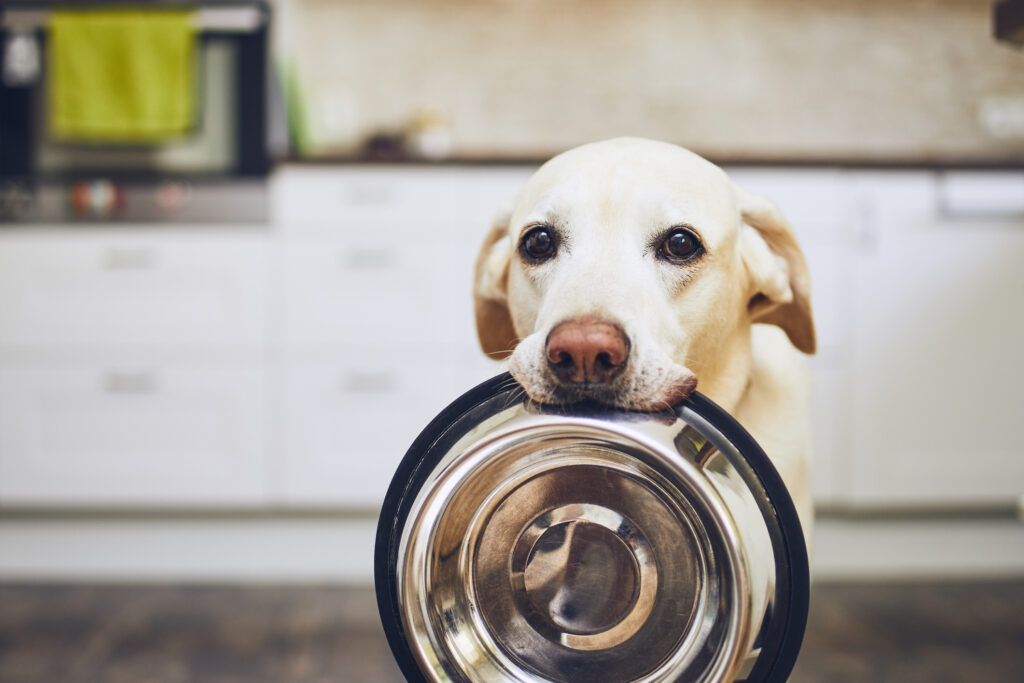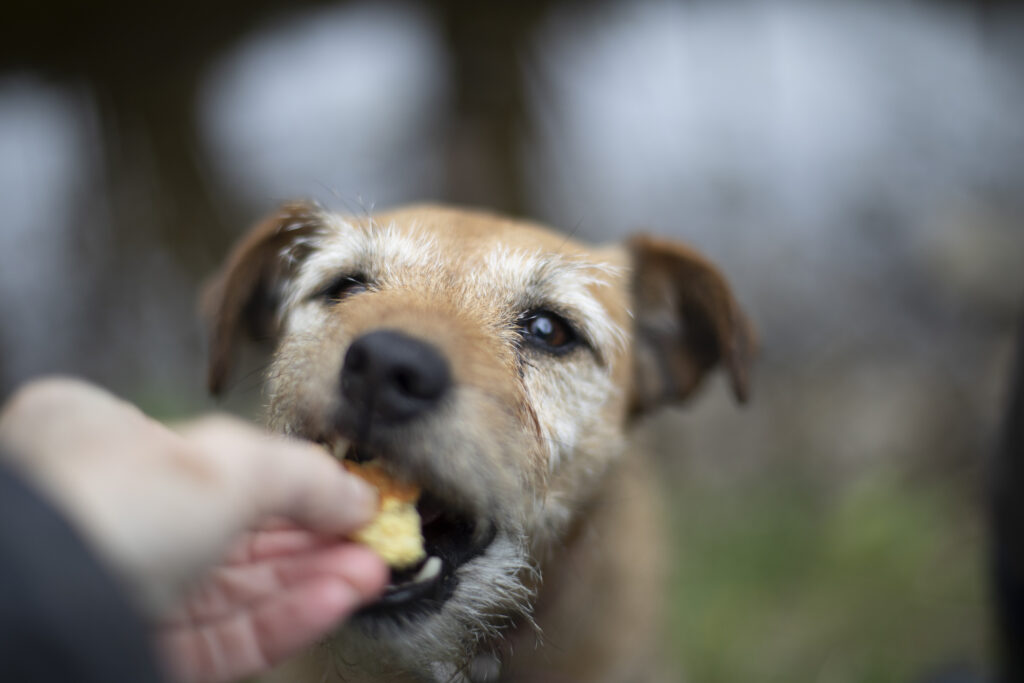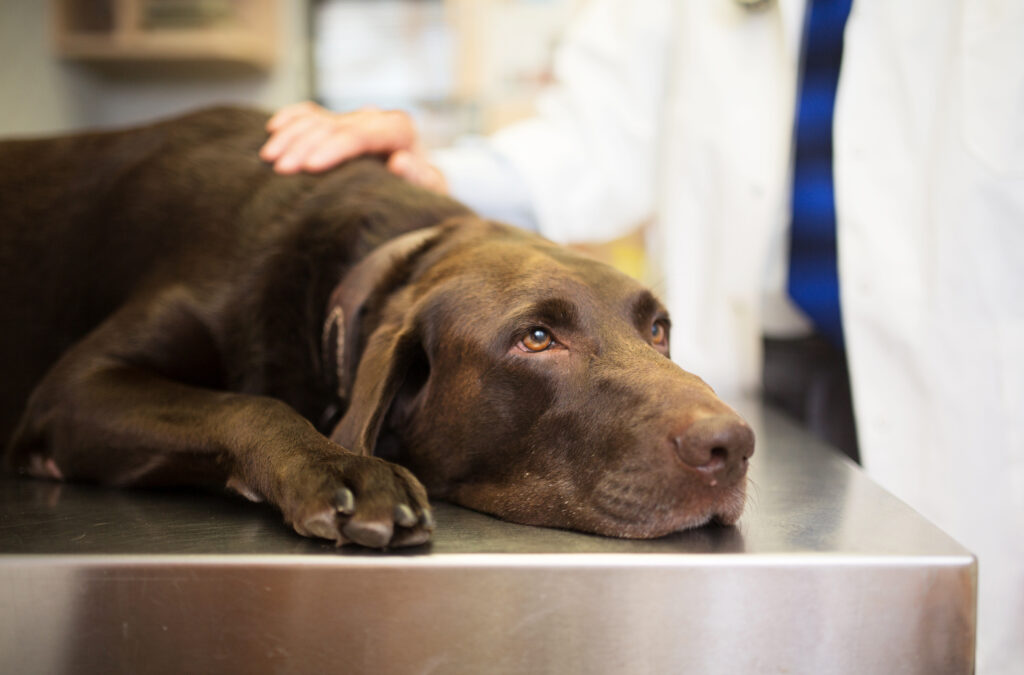Did you know that November is Pet Diabetes Awareness Month? To raise awareness of pet diabetes, we asked one of our resident vets, Lauren, to give you an overview of the condition, including symptoms of diabetes in dogs and what to do if your dog has diabetes.
What is canine diabetes?
Diabetes mellitus occurs if your dog’s pancreas doesn’t produce enough insulin or if their body stops responding to insulin the way that it should. Insulin is the hormone responsible for maintaining the balance of glucose, or sugar, in your dog’s blood. Unlike humans, diabetic dogs always require insulin treatment and cannot be treated adequately with diet or oral hypoglycemic medications alone.
Insulin affects how your dog’s body uses food. When your dog eats, carbohydrates are broken down into different sugars, one being glucose. Once it enters the bloodstream, glucose travels to different cells around the body and is converted into energy. However, if the pancreas cannot produce enough insulin or cells in the body are resistant to insulin, glucose won’t be able to enter the cells. Glucose then builds up in the bloodstream, rather than being converted to energy, and the body starts using fat and protein for energy instead. As a result, a diabetic dog may want to eat constantly, but will lose weight. One of the major complications of diabetes mellitus is ketoacidosis, where the build-up of ketones from fat breakdown can even be fatal.

How common is diabetes in dogs?
Canine diabetes is more common than you might think; anywhere between 1 in 100 to 1 in 500 dogs develops diabetes. Those numbers are expected to increase even further as the number of obese and overweight dogs rise in the UK.
Which dogs are at risk of developing diabetes?
While any dog can develop diabetes, some qualities can make your dog more susceptible to the condition.
- Obesity.
- A medical history of pancreatitis, hypothyroidism, Cushing’s Disease or steroid medications.
- Certain breeds appear to be at greater risk of developing diabetes: Cocker Spaniels, Dachshunds, Doberman Pinschers, German Shepherds, Golden Retrievers, Labrador Retrievers, Pomeranians, Terriers, Toy Poodles and Keeshonds.
- Unspayed female dogs that can become resistant to insulin.

What are the signs of diabetes in dogs?
It’s important to know the signs of diabetes, so you can protect your dog’s health. If you spot any of them, speak with your vet about the possibility of diabetes, as it can look similar to other diseases, like kidney disease.
- Drinking more water than usual (‘polydipsia’).
- Excessive urination: needing to go out more often or urinating inside the house (‘polyuria’).
- An increase in appetite (‘polyphagia’) but losing or not gaining weight.
- A dull coat.
- Lethargy and weakness.
- Cloudy eyes (‘cataracts’).
How is diabetes in dogs diagnosed?
Diabetes is one of many conditions that can affect your dog and cause visible changes in their behaviour, as well as the signs above. A diagnosis of diabetes only becomes definite when glucose is found in the urine and is persistently high in the blood.
When evaluating your dog for diabetes, your vet will:
- Ask if you’ve spotted any of the signs above in your dog.
- Check your dog’s general health, just in case other conditions or infections are causing these signs.
- Test your dog’s urine for the presence of glucose and ketones and, if indicated, will then measure your dog’s blood glucose concentration.
How is diabetes in dogs managed?
When managing diabetes, the goal is to keep glucose concentrations regulated and reduce or eliminate the above signs of diabetes. As each diabetic pet is different, your vet will need to help you determine which method of monitoring will work best for you and your dog.
Managing canine diabetes often requires once or twice daily insulin injections to restore your diabetic dog’s blood glucose concentrations. Each diabetic dog’s requirements are different, so you will need to work with your vet to find the insulin type, dose and treatment regimen.
Your dog’s diet will play an important role in regulating their diabetes. Ideally, they should be fed exactly the same diet every day and at the same time of day. This diet should include a source of good-quality protein, measured amounts of complex carbohydrates, and dietary fibre, and is usually low in fat. Overall, a palatable and nutritious diet that minimises fluctuations in glucose levels and helps your dog maintain a healthy weight is important for managing diabetes. Your vet can recommend a diet that’s best suited to the needs of your dog.
It’s all about routine, routine, routine. Ideally, you should feed your dog the same diet every day and at the same time of day. Their diet should be complete, balanced and palatable to avoid too many fluctuations in their blood sugar. Your vet can recommend the best diabetic dog food that’s best suited to the needs of your dog, especially if they have other existing problems. An exercise routine is also important to help with weight loss and avoid sudden changes in energy needs. If you’re concerned about the amount of exercise your diabetic dog needs, consult your vet.
With a chronic condition like diabetes, it is important to stay in close touch with your vet. You can rely on them to answer all of your questions and help you as you learn to manage your dog’s diabetes successfully.
Our articles are not a replacement for face-to-face vet advice. It’s important to consult with your vet on a regular basis to raise any pet concerns that you may have.




